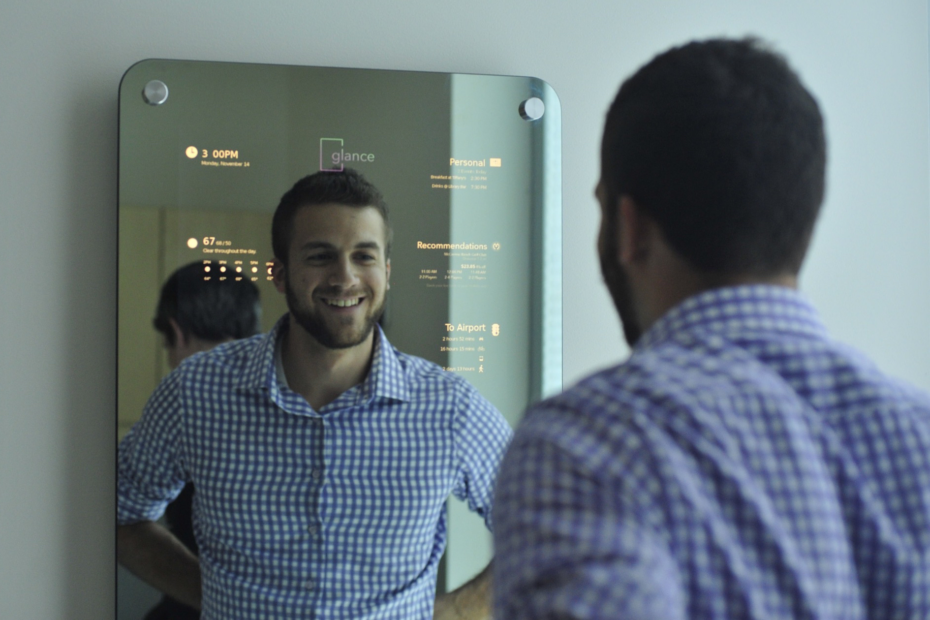Intel and IAG have been collaborating for years in developing IAG’s Enterprise Startup Engagement program. IAG was able to help Intel engage Makers in developing scalable startup companies using Intel’s new tiny semiconductor product, The Curie Module, in a reality TV show called America’s Greatest Makers produced by “Shark Tank” and “Survivor” developer Mark Burnett. The show was a nationally televised competition of 25 teams composed of America’s best Makers. The teams entered the competition with a product idea and were judged on their creativity, entrepreneurship skills, building a working prototype and pitching their company for the grand prize of $1 million. IAG guided the teams through the process of finding a product-market fit for their device while Intel mentors guided teams on how to use their cool, new computer on a chip, the Curie Module.
In fact, I first met the IAG team as a participant of America’s Greatest Makers. (And enjoyed it so much, I joined!) One of my most vivid memories was the first time all the teams got together. I sat across from Dave Krawczyk and his 2 other NWTN team mates. While looking around the room, I could feel the tremendous pressure for all of us to perform to our highest ability in order to win that $1 million. IAG instructors told us that our goal was to create a successful startup that would sell an innovative product – easy. But, there was a catch, we only had 6-months to do it!
Moving quickly, the IAG instructors jumped straight into customer discovery, that is, getting out there and talking directly to customers, users, payers, influences and more. It only took a few days before most of the teams in the competition pivoted their product concept to something new. That was because as we listened to our customers we learned that if we didn’t create something useful, there would be no market for our product, no matter how “cool” or innovative it was. Neither Dave’s nor my team were crowned “America’s Greatest Makers.” However, before the program concluded, we began to believe in the value of talking to our customers. As entrepreneurs, we are resilient. Therefore after the show, Dave found the time to jump into a new startup that had been lingering in his mind since 2011: GlanceMirror.
GlanceMirror is a smart mirror that can update you about your health, meetings, and social media activity. Dave, knowing the value it provides, started his customer discovery process immediately. Within the first week, his team spent $40 to create a concept prototype that was shared with the public. Dave shared his customer discovery journey so far, “the Innovation Acceleration Group has helped me to direct the vision of the company. Every new connection, opportunity, or feature needs to be weighed against the value it will provide to our customers. Why spend hours of engineering time on a feature nobody actually wants?”
A pivotal moment for Dave was during his first few customer interviews. “We originally planned on implementing facial recognition into the mirror. This way, with no interaction at all, the mirror would be able to know who is in front of it. We were able to quickly prototype this with an iPhone and some two-way mirrored acrylic. We discovered very quickly that 100% of the women reported they were not okay with this.” Dave reflected on this memory saying, “Female customers said, ‘If you think you’re going to put a camera in a mirror, put it in my bathroom, and connect it to the internet… you’re nuts!’ Interestingly, men had no issue with this feature… they thought it was cool.” With his camera hypothesis invalidated it then became imperative for his team to talk to more people who may or may not buy the product. It is also interesting to give a mock prototype to a person and observe how they operate it. For example, if you have a button that no one can find you can simply move it before jumping into manufacturing.”
The GlanceMirror team is a close group of skilled entrepreneurs and engineers. Together they are resilient visionaries. Failing fast is not a bad thing. In fact, if you ask the right questions, your customers might end up designing the features of your product for you. After validating his market-fit with his devoted customer-segments Dave concludes our interview by saying, “The future devices in our lives will not be in our pockets, but will be all around us, offering information as we need it, rather than us having to ask for it. In that same way, Glance gives you the information you need when you need it.” In the very near future, particularly if you live in Chicago, you will see GlanceMirror in luxury apartment buildings and hotels. Building management is changing to include the detailed information that individuals want to have.GlanceMirror is not on the market (yet), but they are accepting reservations. If you have any questions about GlanceMirror or the startup culture in Chicago – please contact Dave.




